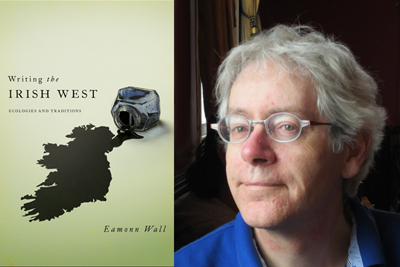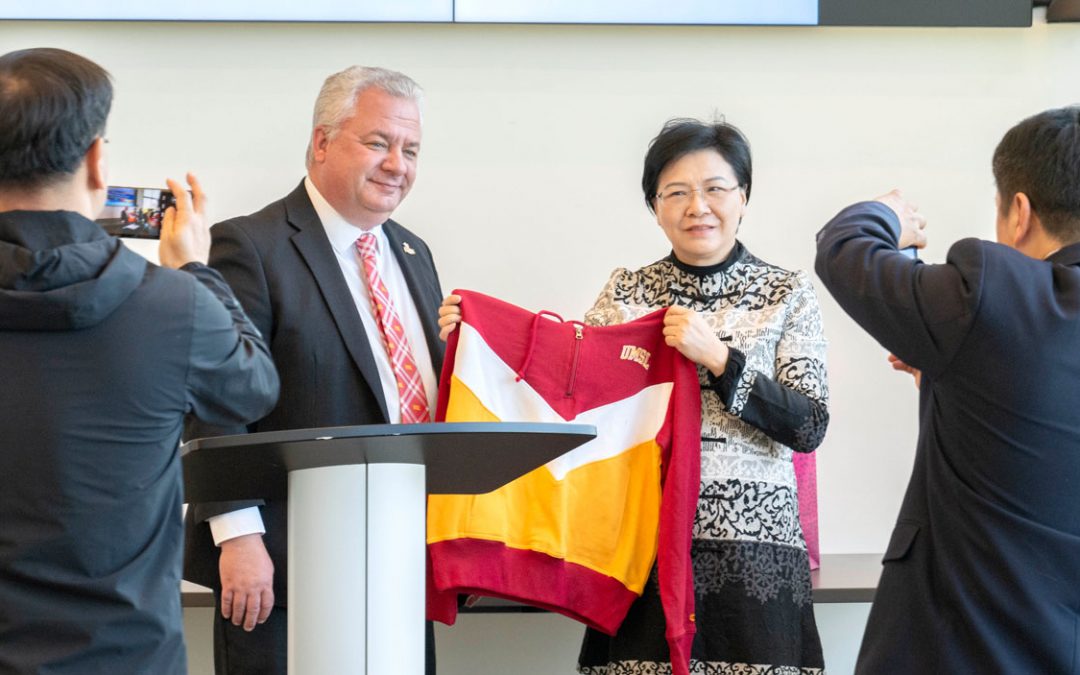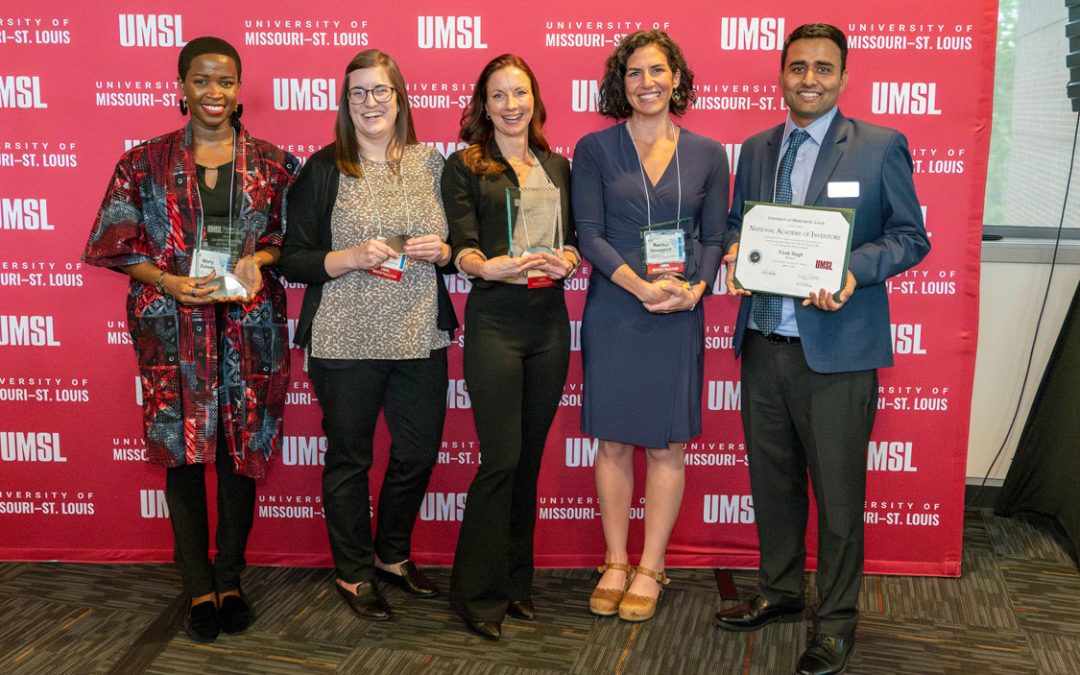
Eamonn Wall, the Smurfit-Stone Corporation Endowed Professor in Irish Studies at UMSL, wrote "Writing the Irish West: Ecologies and Traditions."
Eamonn Wall, the Smurfit-Stone Corporation Endowed Professor in Irish Studies at the University of Missouri–St. Louis, noticed a resemblance in the artistic landscape of the writers and filmmakers of the American West and Irish West. He compares the two regions in his latest book, “Writing the Irish West: Ecologies and Traditions.”
Wall, whose academic home is the Department of English, is the author of five collections of poetry and a book of essays. For “Writing for the Irish West,” he has taken note of the wealth of creative work that has emerged in recent decades from the West in Ireland: the fiction of John McGahern, the plays and films of Martin McDonagh, Tim Robinson’s maps and place studies, the work of Richard Murphy; and the poetry of Mary O’Malley, Moya Cannon and Sean Lysaght.
Wall’s approach for “Writing for the Irish West” was to explore how the Irish artists’ region shaped the visions of their work and how it compares to their American West counterparts.
UMSL News talked with Wall about his new book, his own Irish roots and ecocriticism.
How is “Writing the Irish West” a departure from your other books?
I had to learn a great deal to be able to write the book. It was a great challenge that took a long time, seven or eight years in all, but it has been most enjoyable. I was helped greatly by a leave facilitated by the University of Missouri Research Board. Most of the book was written on the fourth floor of the Thomas Jefferson Library on campus, handwritten on legal pads. Later on, it was typed and revised.
What inspired you to write the book?
I had explored both the American and Irish wests, had read a great deal of the literature that had emerged from both, and I sensed that they were connected in various ways. I dug more deeply into the subject matter and my hunch bore fruit. Also, no one had written a book on the subject or used ecocriticism in Irish studies so I was anxious to explore new territories in my field.
What is ecocriticism?
Ecocriticism is a new way of reading and responding to works of literature that has developed in recent decades. Ecocritics, among other things, seek to examine literature in relation to the whole environment and not just in relation to human beings. Ecocritics explore the importance of place and how place influences how and what writers create in their works. And, ecocritics like to look to the past to discover ecological beliefs in such writers as Shakespeare, Pope, Wordsworth, Coleridge, Emerson and Thoreau, etc. They are considered important influences of modern ecocritics.
Why did you take the approach of comparing the Irish West and American West?
My book is concerned with Irish and American views of their respective western regions and how they connect. So, my approach is comparative. In my study, I am concerned primarily with contemporary writers and filmmakers. My hope is that readers will see how the two regions, and the writers they have produced are connected, and that they will go from my work to the works of the writers I have written about. I want my readers to share my enthusiasm and excitement.
What process did you use to compare and contrast the two regions?
My method is to place the work writers side by side to examine what they share and how they differ. In the work of the playwright and filmmaker Martin McDonagh (“The Cripple of Inishmaan” and “In Bruges”), I trace the influence on his work of such western American filmmakers as Sam Peckinpah and Quentin Tarantino. In how the poet Mary O’Malley writes about the explosive growth of (the Irish city) Galway, I find echoes of what American writers from the West have written about how Phoenix and Las Vegas have grown. I compare and contrast what Tim Robinson has written about the Aran Islands (in Ireland) with what William Least Heat-Moon has written about the Flint Hills of Kansas. My sense is that westernness plays an important role in how people think and write about the West. And this is the case in both Ireland and the United States. The western vision is complex and has produced great writing in both countries.
How did you come to choose the seven particular Irish writers you featured in your book?
I wanted to pick writers working in the various literary genres – fiction, poetry, drama, the short story – so that the book would provide a complete picture. In addition, I wanted to choose well-known and somewhat-neglected writers. Martin McDonagh is well known while Sean Lysaght is not. Women writers, poets in particular, are important in the West of Ireland so one of my intentions was to explore this aspect. In truth, I could have chosen another 30 writers; however, if I had done this, the book would not have been completed.
Where did you grow up, and how did that factor into your research for the book?
I grew up in County Wexford in the Southeast of Ireland. Though Ireland is small, I did not get to visit the West of Ireland till I was an adult. I grew up in a time when people did not travel much except to emigrate to England or the U.S.A. However, when I was growing up, I learned about and discovered the close connections that bind Irish people to their home places, and this helped me in my discoveries of the Irish and American wests. For Irish people, the local world is most important in framing character and perspective. The Irish view is local and international.
Have you explored the American West?
I have lived in, or close to the American West for almost 20 years. St. Louis is the Gateway to the West. I am always conscious of this fact. And I constantly feel the gravitational pull of western America – the West calls me. As I point out in the introduction to the book, exploring the West has become an important part of my life both as an individual and as a writer, and it is also part of my dreams.
You mentioned in an earlier conversation that you were in Ireland with students from UMSL. Tell me about the trip.
One of my initiatives as holder of the Smurfit-Stone Corporation Professor of Irish Studies has been to organize an annual study abroad program at National University of Ireland, Galway. It’s a five-week program that runs from late June through July. Our program is open to UMSL students, students at other U.S. universities, and to life-long learners. 2011 is the 10th year of the program. Students can take classes, taught by NUI Galway faculty in literature, history, music, archeology, etc. as well as participate in trips and activities. Working with the Center for International Studies, where the Irish Studies professorship is based, we are already planning for 2012.
“Writing the Irish West: Ecologies and Traditions” was published this spring by University of Notre Dame Press.
More information:
umsl.edu/divisions/artscience/english/faculty/walle.html
eamonnwall.net
undpress.nd.edu/book/P01445














